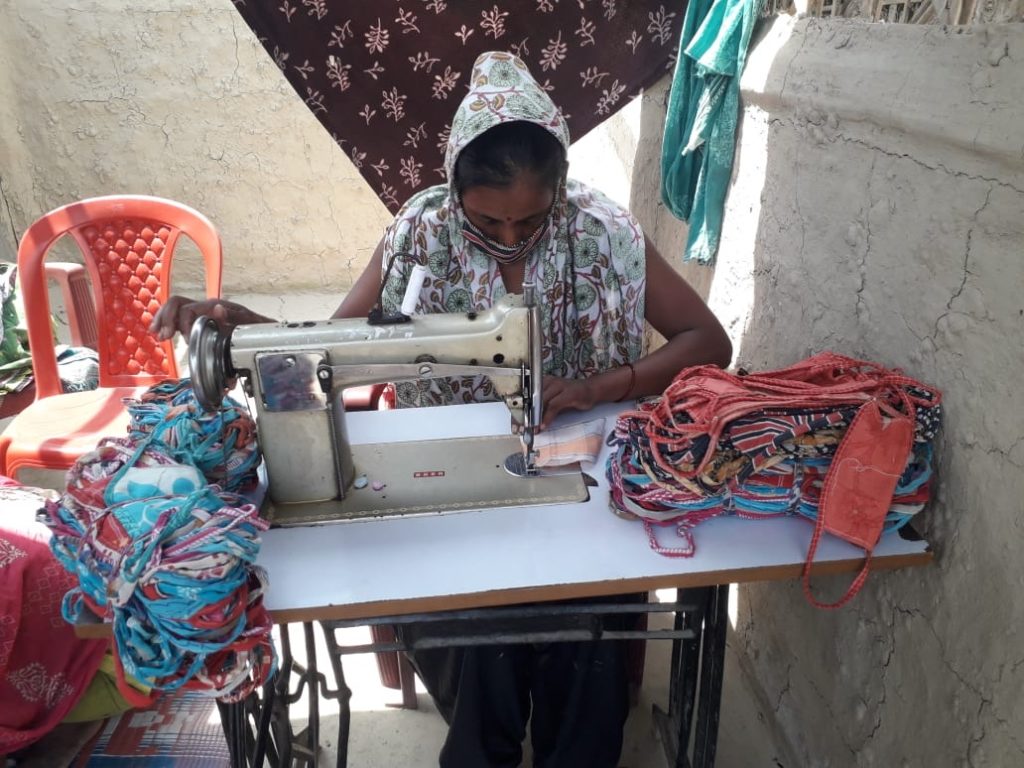By Diana Mao and Kristin Bruce
On a typical day in Bihar, India, a mother wakes up to feed her children and sends them off to grade school—if she can afford it. She goes to draw water for her family from a nearby well in their village. Like many women here, she is illiterate. She gets dressed and walks to her job as a day laborer. If she’s in a financially supportive marriage, her husband will head to work too. Together, they live off of each day’s earnings. In this region, the standard wage is $2.50 per day. Later that evening, the mother heads to the village market. She’ll use some of her day’s earnings to purchase rice, lentils, and fresh vegetables for the family dinner. This family, like many other households in remote parts of India, has no savings account. Still, they are thankful for the necessities of family, food, water, and shelter.
This is life for an average family in the states of Bihar, Odisha, and West Bengal where Nomi Network works. They lack adequate housing, with many living in makeshift huts without running water. The existing health care system is not equipped to meet the needs of the population. For example, Bihar currently has only one COVID-19 testing site for a population of 123 million.
In response to the pandemic, India’s Prime Minister Narendra Modi announced a nation-wide shut down in March. As a result, every sense of normalcy has vanished as these families continue to sink further beneath the poverty line.
Just like we’ve seen in COVID-19 epicenters like Wuhan and New York City, the poor are suffering the most. Thankfully, the outbreak is still slow in India, but India’s poor are not fearful of infection. If you ask the migrant fleeing Delhi by foot to return hundreds of miles to her family in Bihar, or the mother who has five children to feed and no support from her abusive husband, COVID-19 is the least of their concerns. Domestic violence and brutality against women in red light districts have surged, and food is difficult to acquire. Hunger and safety are their public health crises.
India’s abrupt 21-day lockdown has caused a crippling effect that’s regressing the nation’s economy, disproportionately impacting rural women who already faced a challenging life before COVID-19. Millions of vendors, day laborers, and small business owners have lost their income, and have no savings to fall back on. In the states where we work, they are only allowed outside for 4 hours a day between 8 am and noon. Police brutality is more prevalent in these communities as residents are beat for roaming around past curfew. Regional food supply is limited because of bans on imports from other states, and drinking water is delivered infrequently. WHO recommends that everyone washes their hands several times a day, but in remote India, this is not an established societal practice as most households do not have running water.
COVID-19’s ripple effect on India’s economy might be a wake-up call to the rest of the world, but for us, it affirms the need for our life-transforming programs in South and Southeast Asia. Since 2012, we have economically empowered over 10,000 women and girls through our Workforce Development program. Our programs have helped them escape poverty, enter the workforce, and spearhead lasting change in their communities! Our curriculum emphasizes financial literacy as well as self-confidence, community, and servant-leadership. All of these skills have been vital in transforming communities. Our goal is for each woman not just to reach financial freedom, but also to help free their own communities. Our vision aims to disrupt generations of poverty that fuel cycles of trafficking and exploitation. In our programs, we see women from different castes, statuses, and religious backgrounds unite, initiating economic empowerment in their households and their communities. Today, these same women are spearheading our COVID-19 response.
Instead of sharing how Nomi Network is responding to COVID-19, we thought we’d share how our trainees and graduates are serving their communities on the frontlines!
- Before the shutdown, some of our trainees constructed masks from recycled sarees from our production facility in India. They donated 1,500 masks to their neighbors. Now even after the lockdown, production continues! Trainees with home sewing machines are still creating masks. Collectively, they are close to reaching their goal of 15,000 masks made!
- Currently, these masks are available at food distribution centers run by our field team and partners. These food distribution centers are stationed in red-light districts and other remote communities that have been cut off from food and water supply. Our top trainees are stationed at these centers informing local villagers of the latest WHO preventative guidelines!
- Community outreach in remote India is challenging right now as locals are only allowed outside between 8 am-12 pm. Also, many of these regions lack access to the internet and legitimate news sources. As a result, many are being duped into buying placebo COVID-19 medicine, believing it will cure the virus. We have trained and equipped 42 COVID-19 Prevention Units, led by our top Workforce Development trainees from each site— to spread legitimate health awareness to their communities. In the regions where our program sites are based, we supplement government aid by educating the community about health practices and administering vital health checks so they can monitor and report signs of potential spread.
- Collectively, the outreach teams will reach over 18,000 households in 12 weeks and they will be paid for their outreach work.
Strategic and rapid community outreach is the key to stopping the spread in remote communities where social distancing isn’t an option.
Click here to see real-time updates and here to see Diana’s recent interview with Princess Eugenie.

